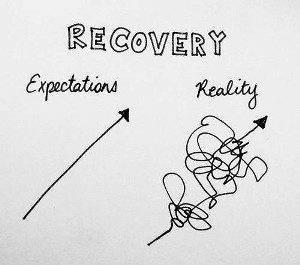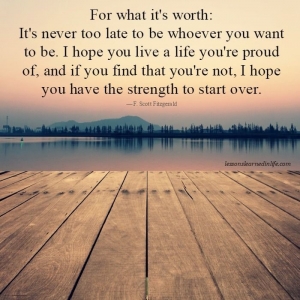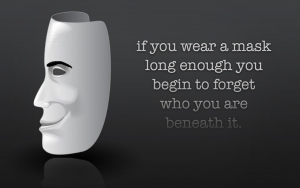
The world was first introduced to Caitlyn Jenner (formally Bruce Jenner) several days ago, when a sneak peek from the Vanity Fair article chronicling her journey from Bruce to Caitlyn was published. For her whole life, Caitlyn experienced a disconnect between how she perceived herself internally and how she appeared externally. Those, like Caitlin, who struggle with gender incongruity are referred to as transgendered. GLAAD defines transgender as “an umbrella term for people whose gender identity or gender expression differs from what is typically associated with the sex they were assigned at birth.”
Both the transgendered population and the eating disordered population experience similar mind-body disconnects, so it isn’t surprising that a lot of people struggling with gender identity develop an eating disorder like anorexia or bulimia.
Here are a few reasons why they might co-occur.
- Both can experience negative feelings about one’s body
- Both may have the desire to change the body to appear thinner/fitter and/or more masculine, feminine, androgynous or sexless.
- Both may feel social pressure around appearance and pressure to conform to society’s ideals of the perfect body or conform to society’s gender expectations.
- Both can feel different on the inside than what is seen by others on the outside.
As we look toward eating disorder recovery, I think we can all learn something from Caitlyn’s bravery and perseverance—both being integral qualities in many recovery journeys. Below are five ways that Caitlyn’s story can inspire eating disorder recovery and encourage the emergence/reemergence of our true selves.
- If you find yourself deviating from your desired path, remind yourself that nobody is perfect; the key is to validate how far you’ve come AND keep pushing for change.
 Bruce tried to transition to Caitlin several times throughout his life. Whether it was circumstances, fear or a little bit of both, he veered off course. Often, stress or difficult life situations can leave us feeling anxious and uncomfortable and wanting to lean on old habits that aren’t necessarily effective in helping us to reach our goals. Bruce has said in interviews that he used running as a way to literally run away from his true self rather than facing whatever his fear was with coming out publicly as Caitlyn. Similarly, those with an eating disorder or any type of addiction have slip ups and that’s okay. Life is not black or white and you are doing yourself a disservice if you view recovery in these terms. So you’ve taken a wrong turn and engaged in an unsafe/unhealthy behavior. Give yourself permission to feel sad or disappointed AND get back on that road toward recovery. Notice how far you’ve come AND keep working toward your ultimate goal.
Bruce tried to transition to Caitlin several times throughout his life. Whether it was circumstances, fear or a little bit of both, he veered off course. Often, stress or difficult life situations can leave us feeling anxious and uncomfortable and wanting to lean on old habits that aren’t necessarily effective in helping us to reach our goals. Bruce has said in interviews that he used running as a way to literally run away from his true self rather than facing whatever his fear was with coming out publicly as Caitlyn. Similarly, those with an eating disorder or any type of addiction have slip ups and that’s okay. Life is not black or white and you are doing yourself a disservice if you view recovery in these terms. So you’ve taken a wrong turn and engaged in an unsafe/unhealthy behavior. Give yourself permission to feel sad or disappointed AND get back on that road toward recovery. Notice how far you’ve come AND keep working toward your ultimate goal.
- It’s Never too Late to Edit your Narrative.
 Caitlyn was 65 by the time she felt ready to show the world her true self. No matter what age you are, recovery is possible with the appropriate tools, support and motivation. If you don’t believe me, check out June’s incredible recovery journey and how she is using her story to teach her granddaughter about positive body image.
Caitlyn was 65 by the time she felt ready to show the world her true self. No matter what age you are, recovery is possible with the appropriate tools, support and motivation. If you don’t believe me, check out June’s incredible recovery journey and how she is using her story to teach her granddaughter about positive body image.
- Find Support and Kinship in the People around You.
It is in our nature as humans to seek out people or groups that help us feel like we belong. For so long, Caitlyn felt isolated, different and scared. How often do you feel that way while living with ED?
Since Caitlyn has come out so publicly, she has received immense support from her family and from the transgendered community. It’s okay to talk about internal struggles and seek support from those you love; how else are they to know that you are struggling? Caitlyn’s relationships with her children from her first two marriages were strained due to hidden truths. How can we expect those around us to give us the support that we need, without first letting them in? Since introducing herself to her children, their relationships are stronger than ever. This is why family therapy is such an integral part of treatment here at Walden—we’re all going to need help from others at some point, and that is okay.
- Allow yourself to be Different.
 While surrounding yourself with people that accept and understand you is amazing and necessary in recovery, it is also important to establish your identity as a unique individual! Something I thought to be super interesting was the fact that Caitlyn chose to spell her name with a “C” rather than a “K” like the rest of her and Kris Jenner’s children. She made a deliberate choice to separate herself from the Kardashians in order to establish herself as a person outside of that family. This choice wasn’t made because she doesn’t love that family, but because she felt like she needed something that is her own. When working toward eating disorder recovery, it is important to remember that no one journey is the same. To compare your recovery to others’ would be detrimental to your own. Sometimes, we need to distance ourselves from others in order to decide for ourselves the person that we want to be. Caitlyn was able to shed the façade of Bruce Jenner, enabling her to evolve into the person that she was destined to be. What is something that you hide from others? Why do you feel like you need to conceal this part of you? What does the mask look like? How is this mask affecting your recovery?
While surrounding yourself with people that accept and understand you is amazing and necessary in recovery, it is also important to establish your identity as a unique individual! Something I thought to be super interesting was the fact that Caitlyn chose to spell her name with a “C” rather than a “K” like the rest of her and Kris Jenner’s children. She made a deliberate choice to separate herself from the Kardashians in order to establish herself as a person outside of that family. This choice wasn’t made because she doesn’t love that family, but because she felt like she needed something that is her own. When working toward eating disorder recovery, it is important to remember that no one journey is the same. To compare your recovery to others’ would be detrimental to your own. Sometimes, we need to distance ourselves from others in order to decide for ourselves the person that we want to be. Caitlyn was able to shed the façade of Bruce Jenner, enabling her to evolve into the person that she was destined to be. What is something that you hide from others? Why do you feel like you need to conceal this part of you? What does the mask look like? How is this mask affecting your recovery?
- Keep your mind open
As anyone with any mental illness can attest, it is very hard for some people to accept what isn’t outwardly exhibited. For the same reason that there is stigma in the eating disorder world, there is also stigma for those who identify as transgendered—ignorance. So many myths have been created for both populations and it is time that we all take the time to debunk these myths before making an unfair judgement. I think the biggest myth that these two populations share is the idea that they are phases that one will grow out of. Both of these populations often have a deep-routed disconnect between what is felt internally and what is actually seen externally—a painful experience that one wouldn’t simply “choose” to struggle with. Just as many uninformed consumers may think that Caitlyn’s transition was a publicity stunt, those with eating disorders must also deal with those who think that they are making up their illness in order to get attention. Both of these populations are fighting an extremely personal battle against themselves, and for them to come out publicly is scary and can lead to feelings of shame and guilt. These brave people who decide that sharing their story might help other people to feel more accepted should be seen as heroes. Keep your mind open to those who may be different, because in the end, we are all human.
####
About the author:
Natalie Cohen is the Senior Marketing and Community Relations Associate for Walden Behavioral Care. She earned her Bachelor of Arts degree in Journalism from the University of Maine in Orono. Her favorite part of working at Walden is being able to act as an advocate for clients suffering with mental illnesses and interacting with other eating disorder professionals in the community. Ms. Cohen’s passions include writing, social media and event planning. In her spare time, Natalie enjoys spending time with her dog Bella, family and friends.







